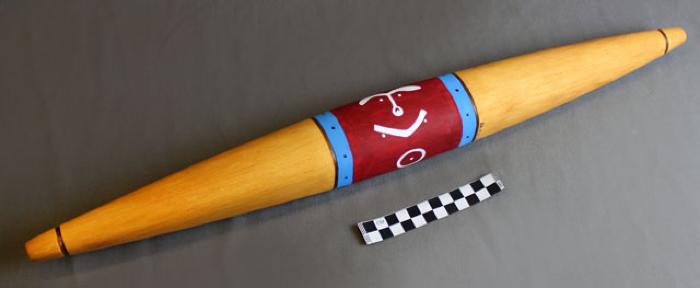Bailer — Imanga’iyutaq

Whether you are piloting a seiner, running a skiff, or paddling a canoe, water is bound to get into your boat. Waves, rain, the wake of other vessels, or pulling struggling fish on board can create puddles in the bottom of even the most sea-worthy watercraft. Today’s boaters solve this problem with a wide range of tools, using everything from pumps to coffee cans and milk jugs to send unwanted water overboard.
Before disposable plastic containers, Alutiiq kayakers used elegant wooden bailers. The traditional bailer was a long, narrow tube, up to about two feet long. Craftsmen shaped a length of wood, cut it in two, and then hollowed it out to create two identical, convex pieces. Each side had shallow, encircling grooves carved across the width of the object—at its ends and in the middle. These grooves were designed to hold lashing, so the halves of the tools could be tied together. When assembled, the result was a hollow, cigar-shaped tube—narrow on the ends and wide in the center.
The Alutiiq word for bailer–Imanga’iyutaq–literally means thing for emptying. This tool could be used with one hand and worked like a straw. The kayaker placed one end of the bailer in his mouth and sucked to pull water out of his boat and into the tool. Then, he took the bailer out of his mouth, placed a finger over the opening, and tipped the bailer’s contents overboard through the opposite end. When used regularly, contact with water caused wooden bailers to swell. This kept the lashing tight and the bailer from leaking.
